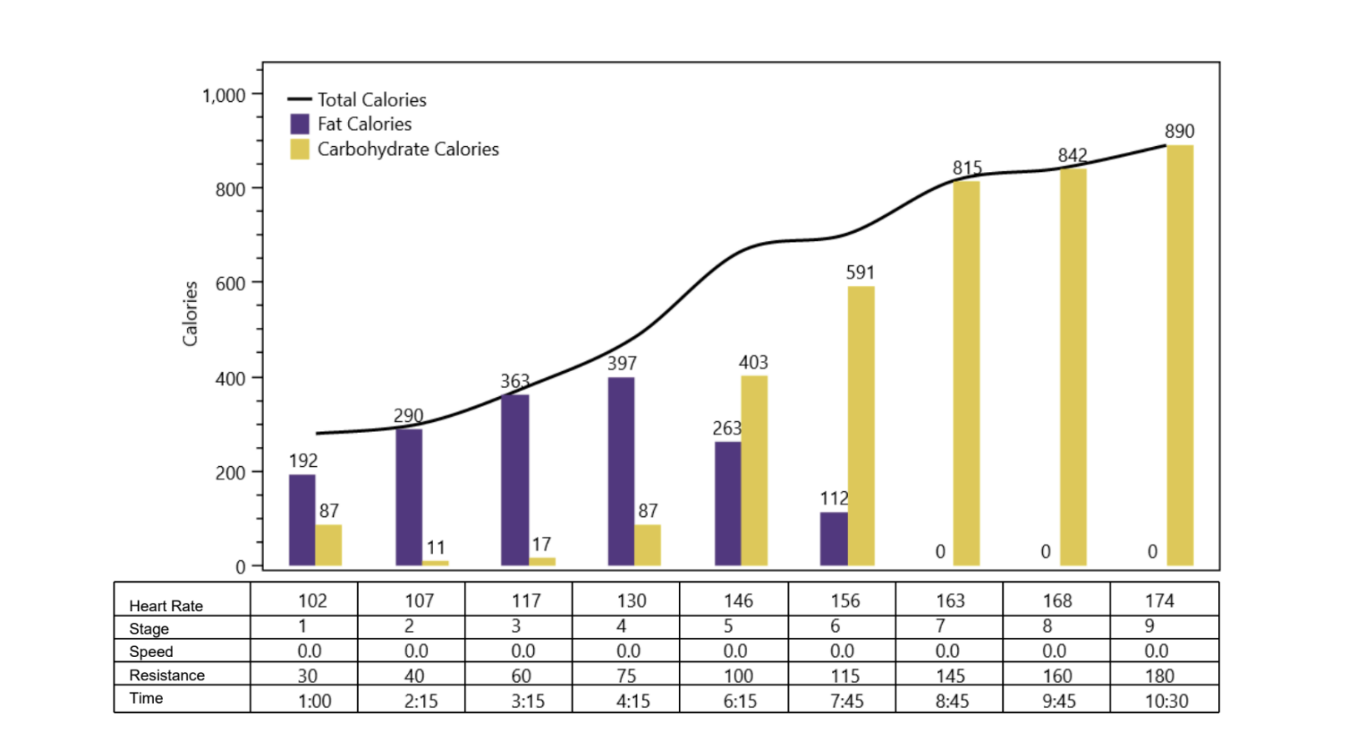The Fitness Metric Everyone’s Talking About — and Why It Could Redefine How You Train (and Age)
Fuel Isn’t Just Food — It’s Strategy: How Your Body Chooses What to Burn
Every breath you take and every calorie you burn tell a story about how your body creates energy. At Precision Human Performance, we measure these processes through VO₂ max testing and Resting Metabolic Rate (RMR) testing — two of the most powerful tools in exercise physiology.
Together, they uncover a concept called substrate utilization — the balance between fat and carbohydrate metabolism that determines how efficiently your body fuels performance, recovery, and longevity.
VO₂ Max: The Oxygen Economy
If you haven’t read our most recent Insight Articles - Your VO₂ max — or maximal oxygen uptake — represents the upper limit of your aerobic capacity. It’s the most reliable measure of how well your heart, lungs, and muscles work together to use oxygen during exercise.
Higher VO₂ max means greater endurance, faster recovery, and improved cardiovascular health. Research consistently shows that VO₂ max is one of the strongest predictors of all-cause mortality, even more so than traditional risk factors like smoking or high blood pressure (Mandsager et al., JAMA Network Open, 2018).
But oxygen utilization is only half the picture — the other half is what kind of fuel your body is burning with that oxygen.
RMR and Substrate Utilization: How Your Body Burns Energy
Your Resting Metabolic Rate (RMR) measures the calories your body burns at rest and reveals how efficiently you convert those calories into usable energy. Using indirect calorimetry (like our Korr CardioCoach system), we analyze your Respiratory Exchange Ratio (RER) — the ratio of oxygen consumed to carbon dioxide produced.
RER ≈ 0.7 → Fat is the primary fuel source
RER ≈ 1.0 → Carbohydrate is the primary fuel source
This measurement gives us insight into substrate utilization, or how your body selects and shifts between fuels — a quality known as metabolic flexibility.
Why Substrate Utilization Matters
Being able to efficiently burn fat at rest and during low-intensity exercise — and then smoothly transition to carbohydrate metabolism as intensity increases — is crucial for both athletes and longevity seekers.
Recent studies have demonstrated:
Diet, training status, and body-fat percentage all influence how efficiently you oxidize fat at submaximal intensities (Randell et al., 2022, Sports).
Athletes with low energy availability exhibit reduced fat utilization and lower resting metabolic rates, showing that adequate fueling is critical for both performance and metabolic health (Andersson Hall et al., 2024, Frontiers in Physiology).
Lean muscle mass, not total body fat, is a key predictor of RMR — reinforcing the role of resistance training in maintaining a healthy metabolism (Johannsen et al., 2024, Journal of Clinical Medicine).
The “crossover point” — where carbohydrate becomes dominant over fat as a fuel — varies widely by individual and is influenced by training, sex, and body composition (Torres-Peralta et al., 2022, Frontiers in Psychology).
Two Tests. One Story.
Your VO₂ max and RMR tests are like two halves of the same story — one shows how your body uses oxygen, the other reveals how it uses fuel.
VO₂ Max measures your cardiovascular and respiratory efficiency — how much oxygen your body can take in and deliver to working muscles.
RMR (Resting Metabolic Rate) measures your energy burn at rest and the mix of fuels (fats and carbohydrates) your body relies on most.
Together, they paint a complete picture of your metabolic flexibility — how efficiently you generate energy and switch between fuel sources.
That insight is what allows us to personalize your training zones, nutrition strategy, and recovery plan with precision — turning guesswork into data-driven progress.
Why It Matters for You
A strong VO₂ max paired with efficient fat metabolism means you’re building a system that performs well now and ages gracefully. Fat oxidation supports endurance, hormonal balance, and recovery — while maintaining the ability to shift into carbohydrate metabolism supports power, speed, and resilience.
The Gatorade Sports Science Institute emphasizes that improved fat metabolism through training and proper fueling not only enhances performance but supports overall energy balance and metabolic health (GSSI, 2024).
Take the Next Step
If you’ve completed your VO₂ max test, adding an RMR assessment gives you the other half of the data you need to train with precision.
Your metabolism isn’t a mystery — it’s measurable, adaptable, and trainable.
👉 Book your RMR Test
or
📊 Add RMR testing to your next VO₂ Max appointment


